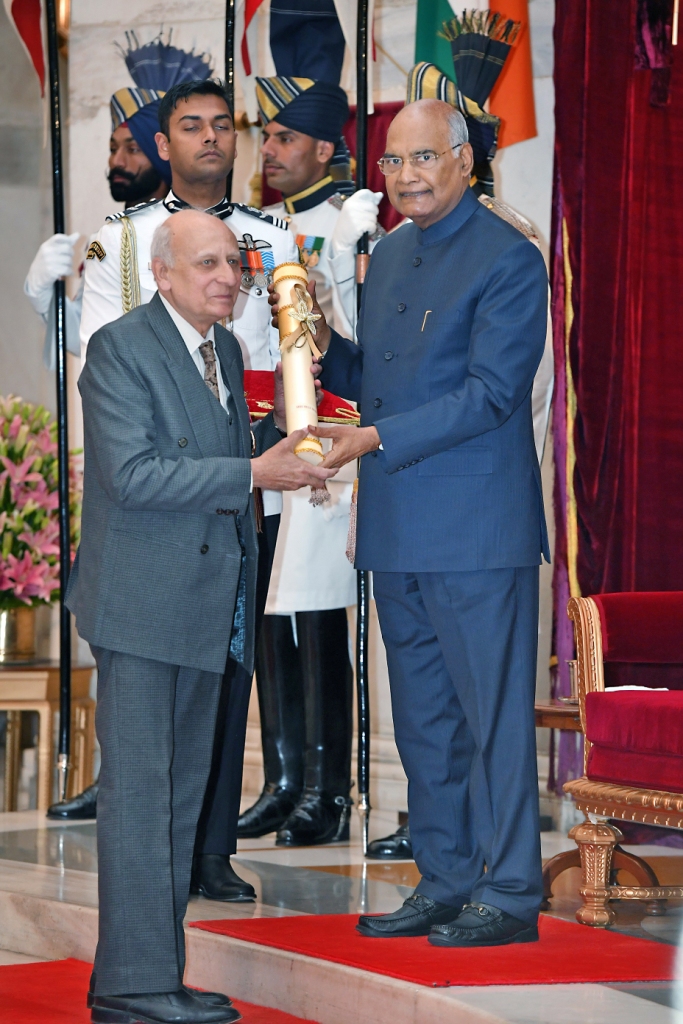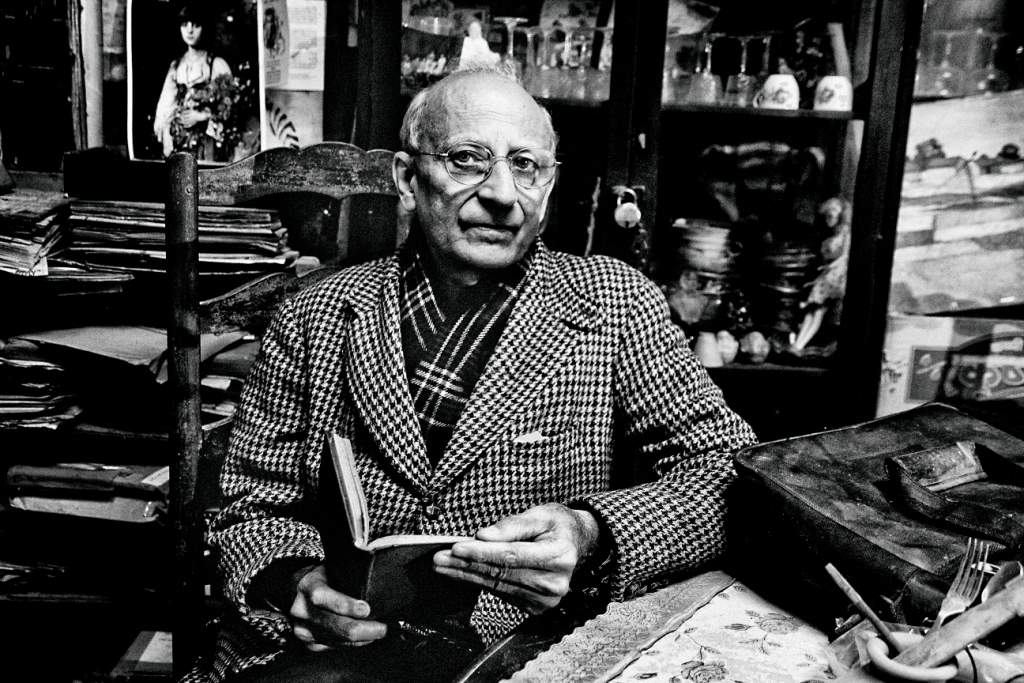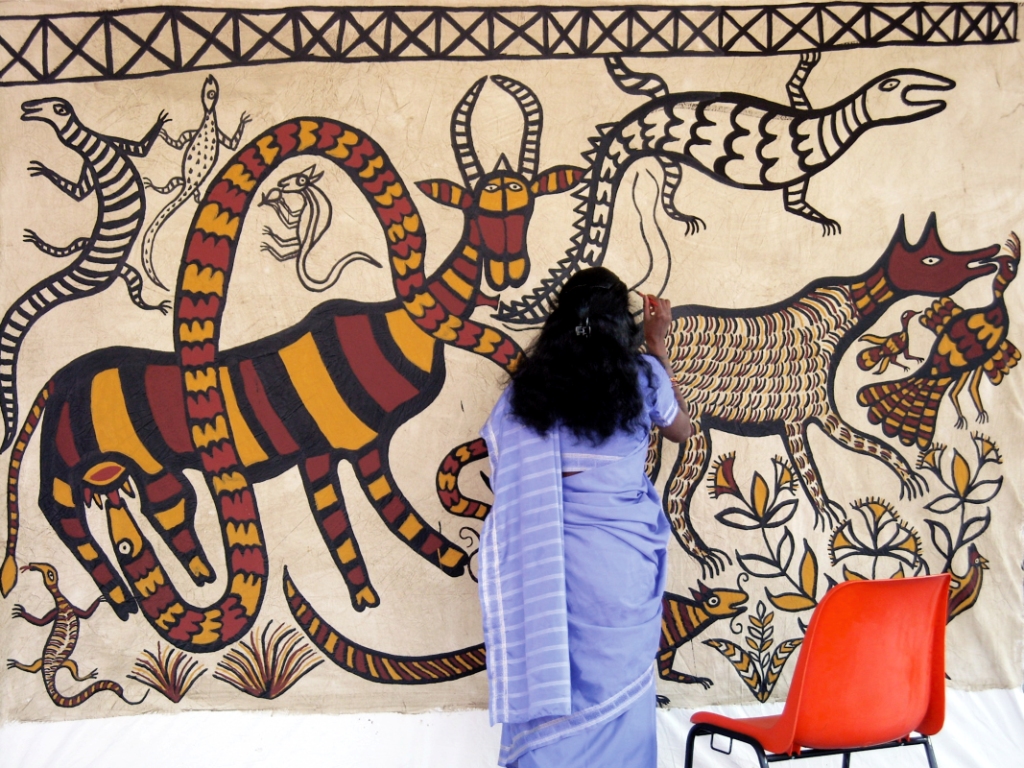Padma Shri Bulu Imam is a gem that many people are unaware of. He is an archaeologist, a revivalist of tribal paintings, and the recipient of the Gandhi Foundation’s International Peace Award for his humanitarian efforts. He is a big-game hunter turned environmentalist, as well as an archaeologist, and a revivalist of tribal paintings. He currently manages ‘The Sanskriti Centre,’ a museum and art gallery, alongside his son Gustav Imam.
Bulu’s life has been a fascinating one. Imam hunted 19 elephants and numerous man-eating tigers as a big-game hunter in the 1960s and 1970s. He comes from one of India’s most distinguished families, which has produced a constant stream of intellectuals over the previous two centuries. In the late 1800s, the British designated his great grandfather, Nawab Syed Imdad Imam, Shams-ul-Ulema or Poet Laureate, and his grandpa, Syed Hasan Imam, was elected President of the Indian National Congress in 1918. his early life was spent organising tiger hunts with his father in the region of Jharkhand, earlier southern Bihar. He was then also closely associated with the forest as well the tribals. In 1979, while travelling throughout the state with British traveller-writer Mark Shand and his elephant, he witnessed the state’s devastation of dense forest for coal mining. “This land of coalfield bed has been the home of millions of tribal people who have lived there for ages,” he said in an interview. Coal mining resulted in not just environmental degradation and tribe dislocation, but also cultural loss. Apart from their livelihood, people worship sacred rocks there, which are also megaliths, some of which date back before 2000 BC. He therefore stopped hunting in order to conserve the tribal culture, which was disappearing due to coal mining.
As a result, faced with the extinction of this civilization, he committed his life to its preservation. In the North Karanpura Valley, he became a powerful advocate for tribals and animals against open cast mining. He also emphasised the need of safeguarding corridors for elephants and tigers to have unique habitats.
Bulu embarked on an examination of Adivasi identity in order to validate his advocacy. In response to his efforts to save natural and cultural assets, he was appointed regional convenor for INTACH in 1987. Bulu discovered the first Mesolithic rock art at Isco (Hazaribagh) three years later, in 1991, and eventually identified a dozen prehistoric rock art sites dating back more than 5,000 years in the North Karanpura Valley. He also discovered palaeoarchaeology sites linked to Mesolithic rock art, ancient megaliths, and Buddhist archaeological sites. The Archaeological Survey of India recognised these sites, strengthening the region’s cultural legacy.
Bulu Imam made an incomparable contribution to rock art. In 1993, he brought to light the Khovar art, followed by the Sohrai (harvest) murals painted on the walls of the Hazaribagh villagers’ mud huts. (In 1993, ancient cave art going back to 10000 BC was unearthed in the ancient caverns of Isco, a settlement in the Hazaribagh area. The caves are believed to have served as bridal chambers). Jharkhand’s Adivasi women paint their mud homes inside and out twice Kingdom. Bulu’s sons, Gustav and Justin Bulu, have also dedicated their lives to carrying on their father’s heritage of cultural preservation. Gustav is a museum studies postgraduate student at the University of East Anglia (UEA) in Norwich, and he formerly worked at the Cambridge Museum. ” He is presently the curator of the Sanskriti Museum.” Justin established the Virasat Trust in 2012 to empower women via various programmes.
Furthermore, he has produced numerous documentaries on Jharkhand’s tribal art and culture, including The One-eared Elephant – from Hazaribagh on tribal art, 2005, directed by Susanne Gupta, and In Search for the First Dog with National Geographic, which received the Explorer Club Award in New York in 2005. He is a researcher and expert in archaeology, tribal and rock art, vernacular folklore, and history. He is the author of the book Bridal Caves, Antiquarian Remains of Jharkhand, written monographs on tribes like the Birhors and the Santhals. He spent his adolescence writing, poetry, drawing, and researching in order to preserve Jharkhand’s tribal art and deep woods. He is currently 79 years old and resides with his family at his Sanskriti Centre in Hazaribagh, Jharkhand, nestled amid a wilderness of tall trees and lush vegetation. In 2011, he received the Gandhi Shanti Puraskar, an international peace award, from the Gandhi Foundation in London, and in 2019, he received the Padma Shri.

Image Courtesy: Rashtrapati Bhavan, New Delhi.
Bulu Imam’s discovery of Sohrai and Khobar art, deep mysticism love towards the nature and environment, and dedication to the Hazaribagh tribal people piqued my interest in learning more about him as a person and an environmentalist, so we agreed to discuss his journey.
GAURAV KUMAR: Describe briefly your journey from hunting animals to being involved in community advocacy.
BULU IMAM: I was a big game hunter that like Jim Corbett hunted dangerous man-killing animals for ridding the villagers of them and this was accompanied by my writing of these experiences into articles I used to publish successfully during the 1980s. Being born in 1942 in the pleasant hilly town of Hazaribagh in Jharkhand from my youth I was devoted to…
To read more, subscribe to our magazine.




